Understanding the Fresnel Effect
The Fresnel Effect is one of my favorite light effects.
When I’m painting a reflective surface, “adding Fresnel” is my go-to solution. It’s a tiny tweak with a big impact.
Look at the image below and notice how the brightness of the tabletop changes.
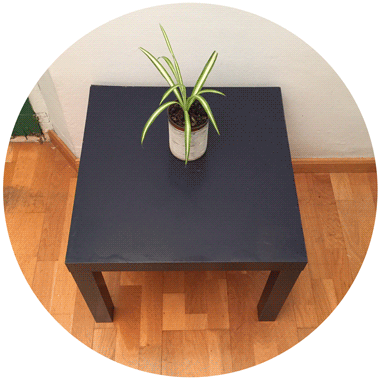
How does it work?
To understand the Fresnel Effect, you have to understand the basics of reflections.
We’ll keep this minimal – the key is the Angle of Incidence.
The Angle of Incidence is the angle between your line of sight and the surface of the object you are looking at.
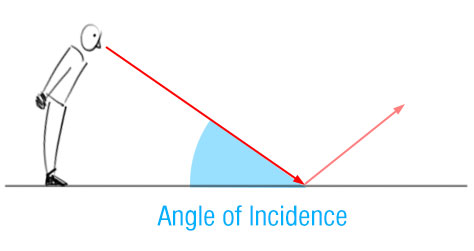
The principle of the Fresnel effect is simple:
Steep angle = weak reflection, shallow angle = strong reflection.
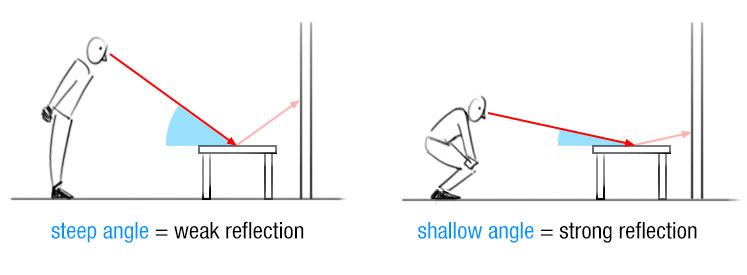 Flat Surfaces
Flat Surfaces
I was blind to the Fresnel Effect until someone pointed it out to me — now I can see that it is everywhere! If you’re looking for it, you’ll find it.
Here is another example: reflections change across distance – because the angle of incidence changes. As you look down to the ground close to your feet, the angle of incidence is very steep. If you look at a point on the ground that’s further away from you, the angle gets more shallow – and the reflection becomes more visible.
Here is the breakdown:
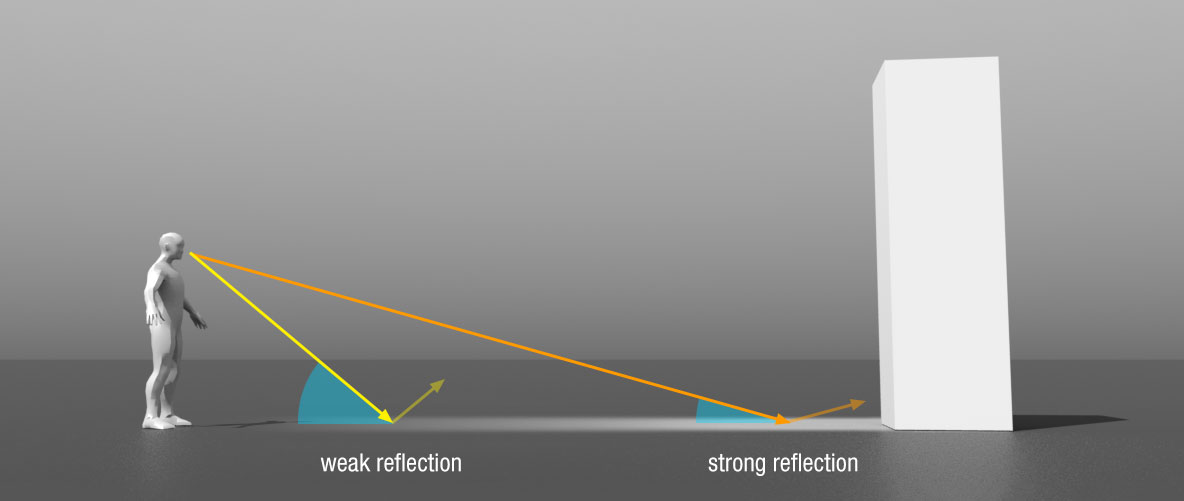
And here is what we see from the viewpoint of the person. Use the arrows to the left and right of the image below to switch between versions with Fresnel Effect and without Fresnel Effect.
Curved Surfaces
On curved surfaces, the angle of incidence gets steeper towards the edges of the form. On a cylinder, the fresnel effect leads to the specular reflections being most visible in the red areas:
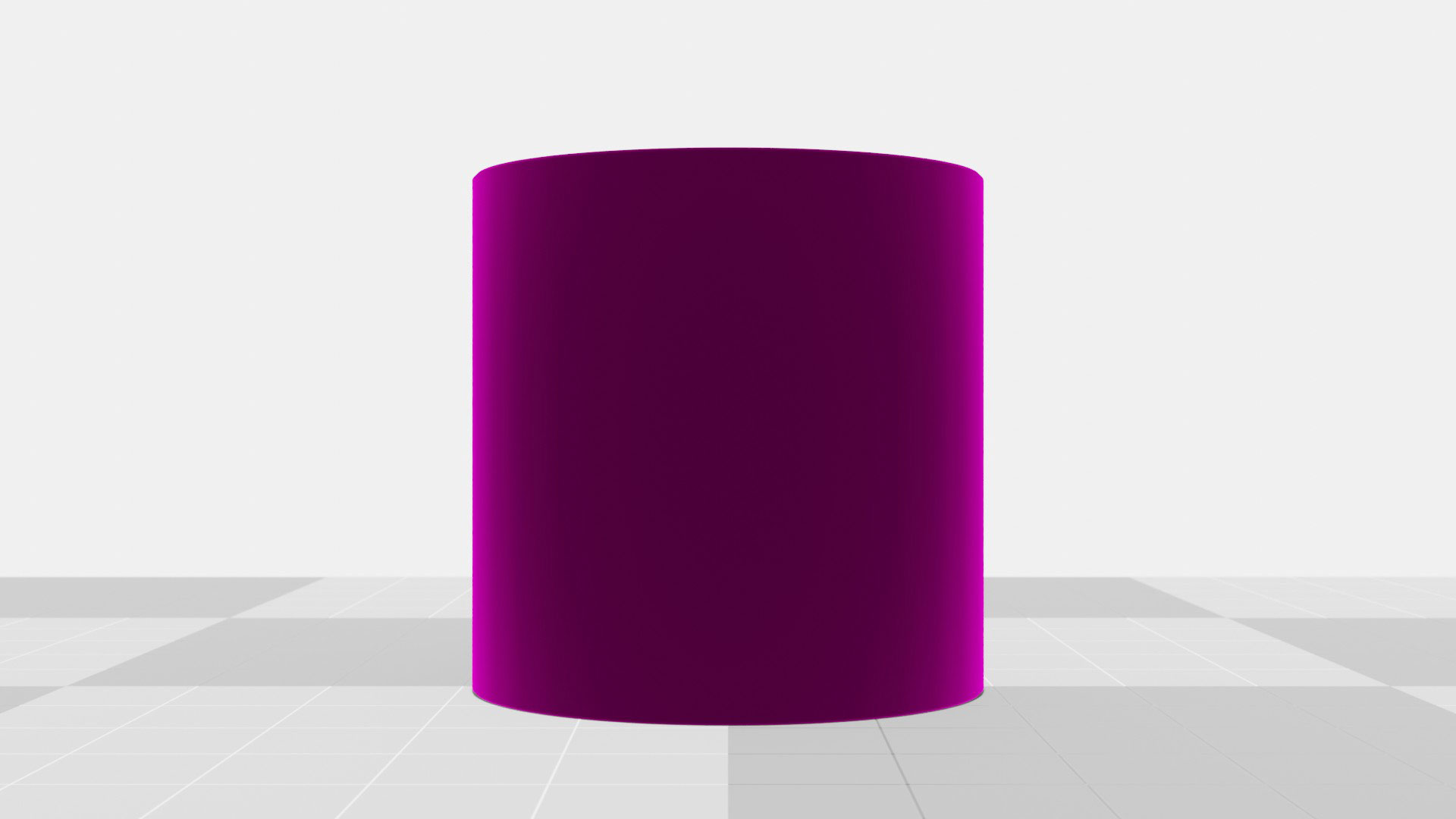
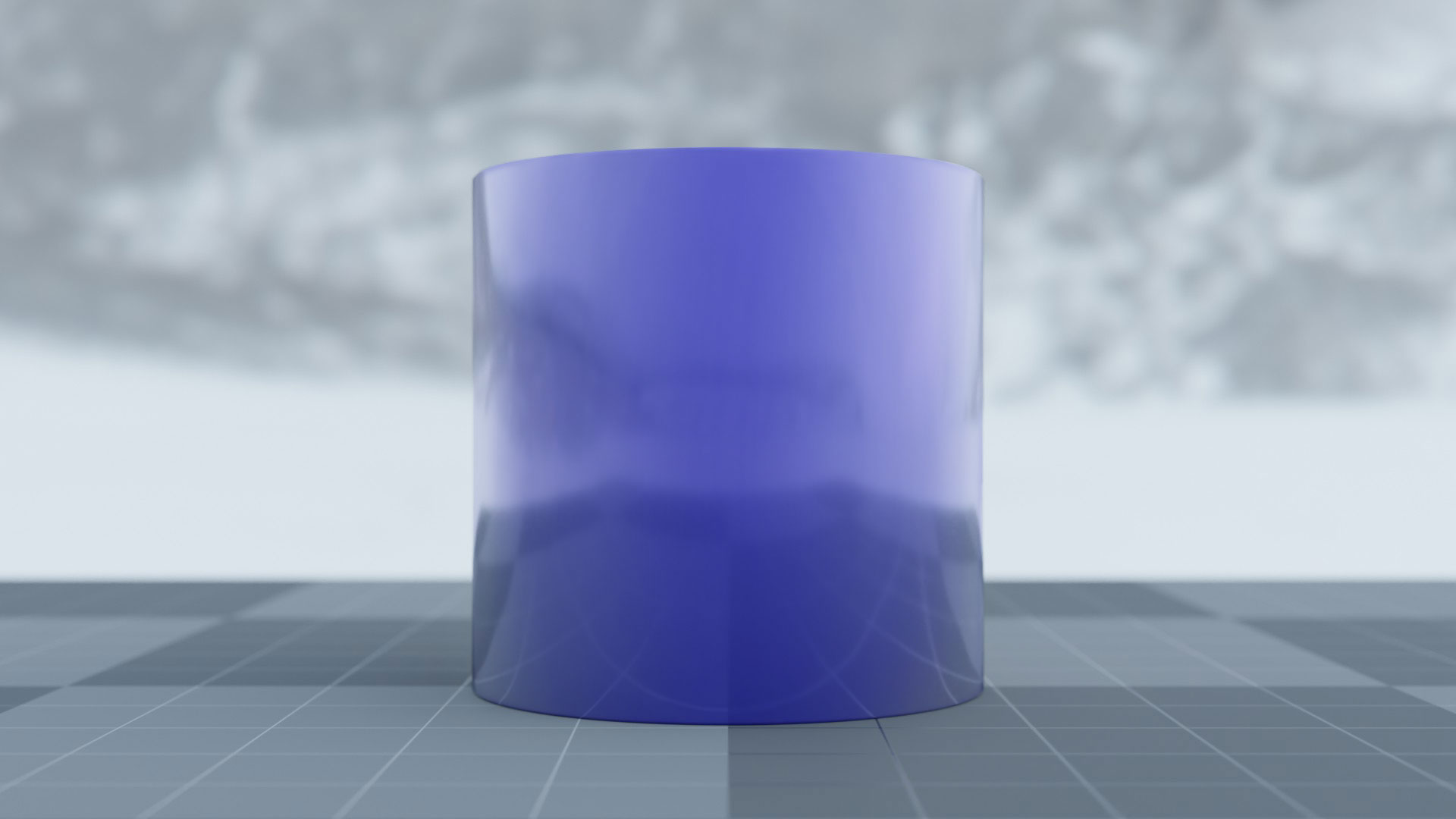
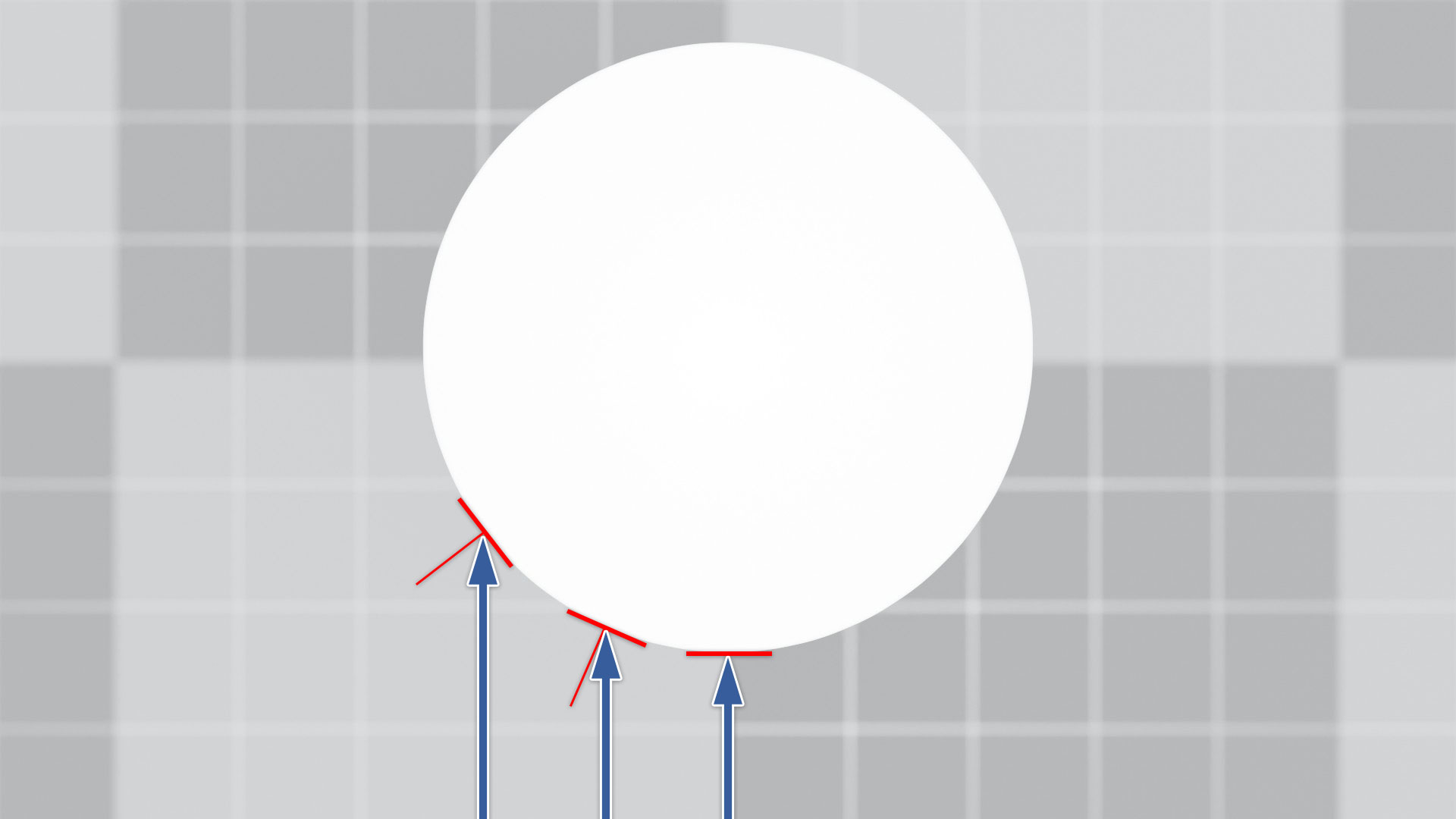
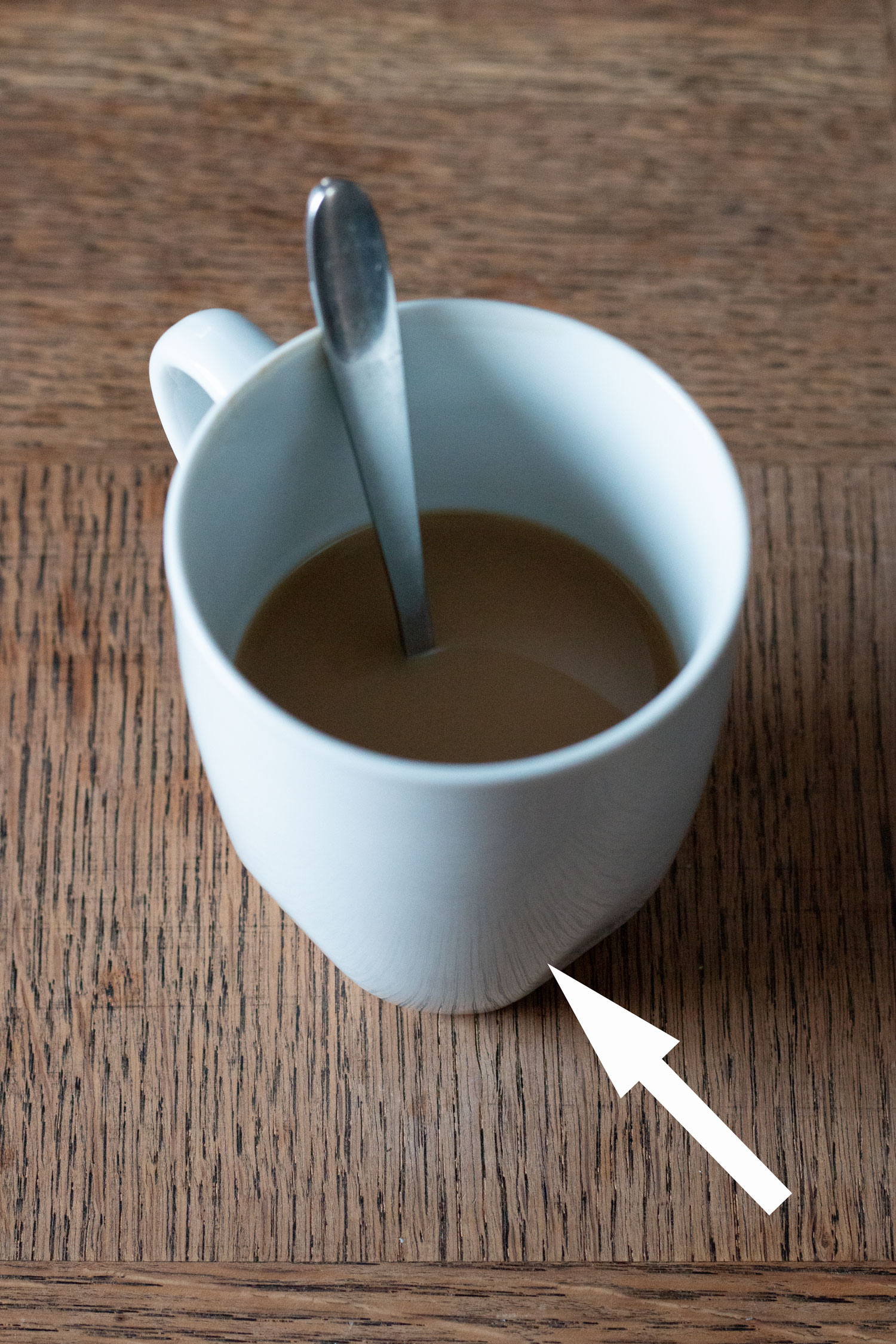
Look Around You
Take a look around the space you are in. Can you find an example of the Fresnel Effect? Look at shiny floors and plastic surfaces. Crouch down as I did and see how the intensity of the reflection changes.
To learn more, here is the Wikipedia article on Fresnel Equations.
Happy hunting! 🙂
Dorian
PS. If you find this interesting, you might enjoy learning about the 11 Modeling Factors – light effects that create the sensation of form.
PPS. Here is a nice example of the Fresnel Effect in a 3D program.

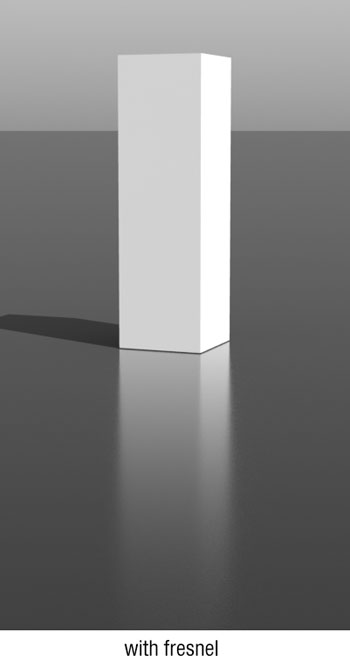
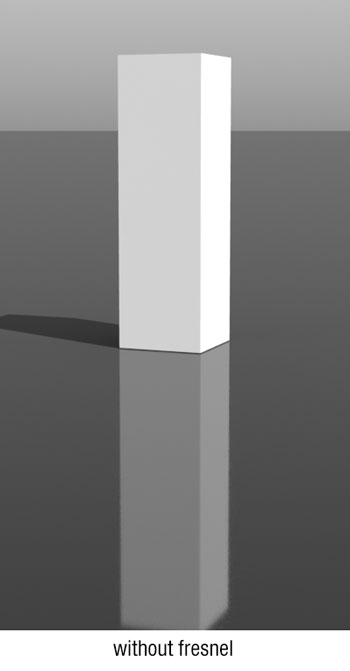
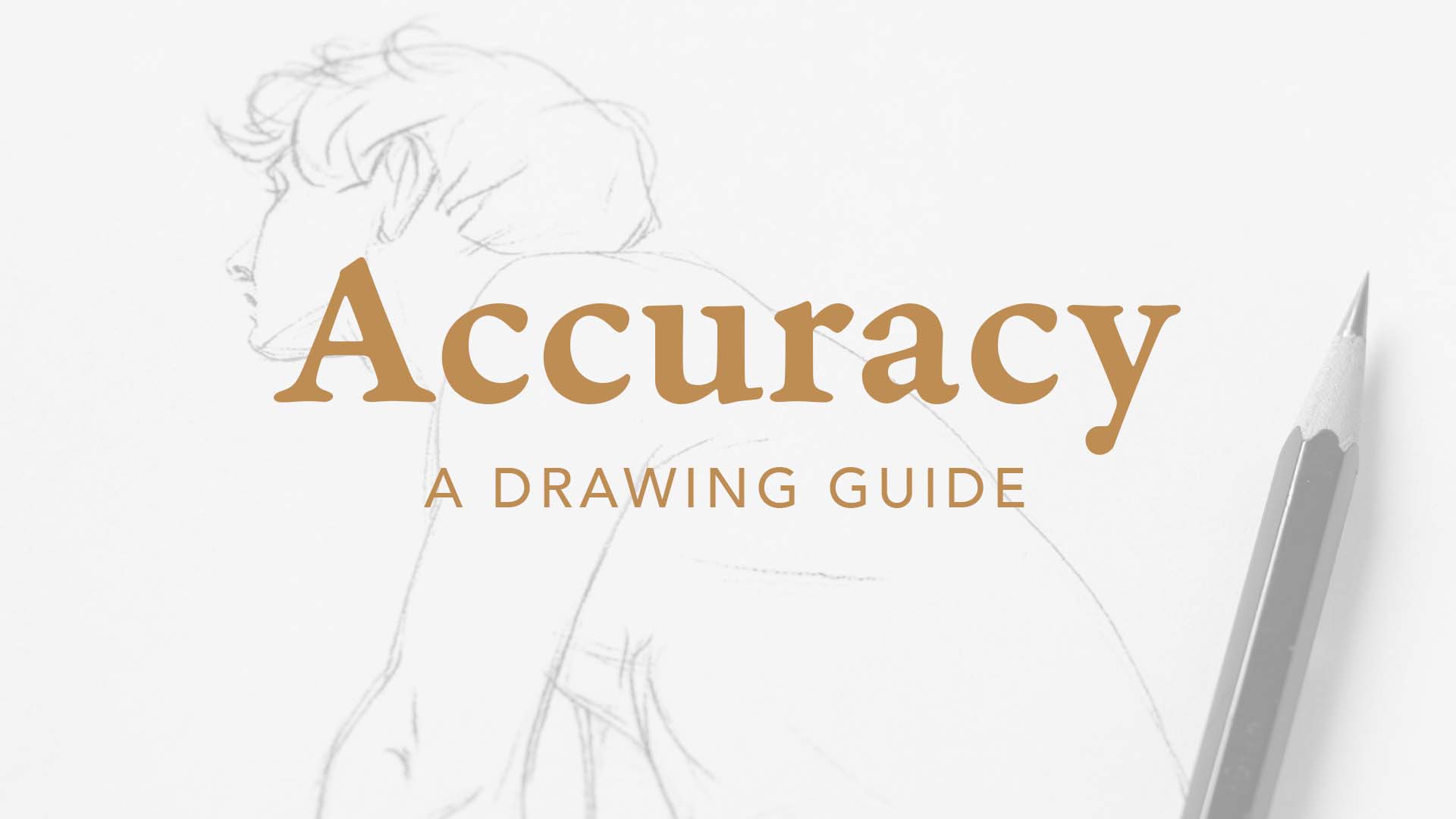
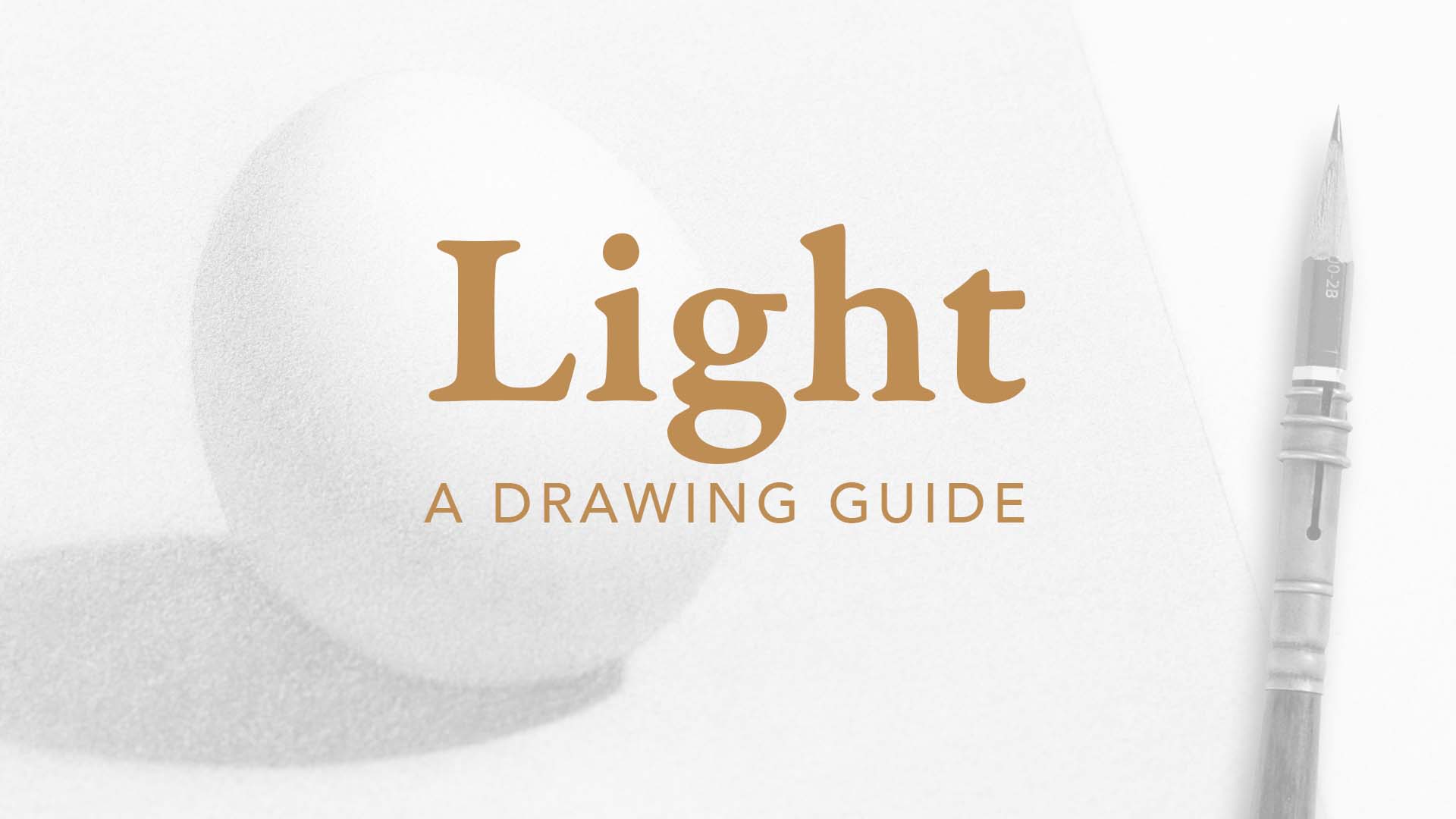
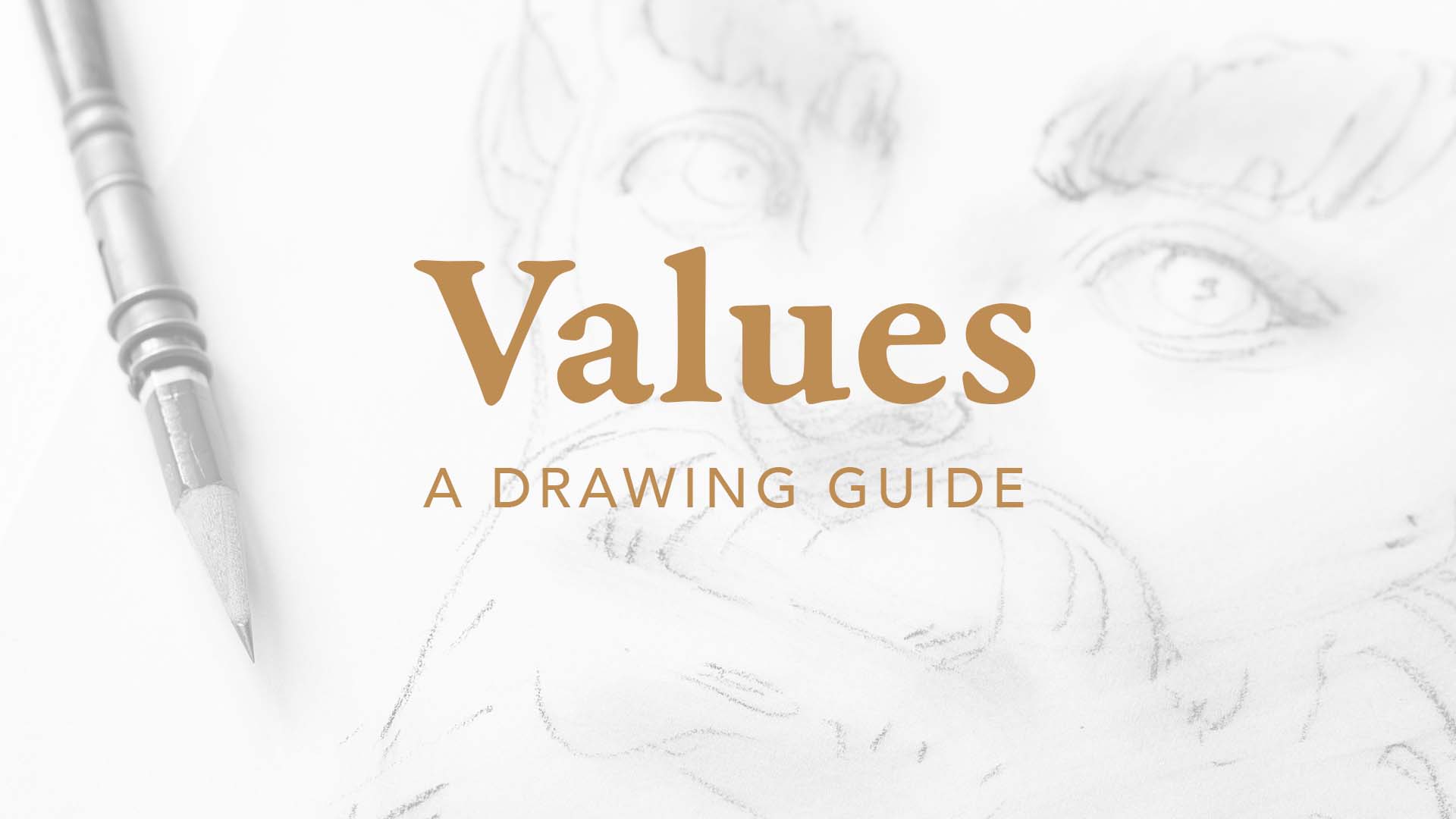

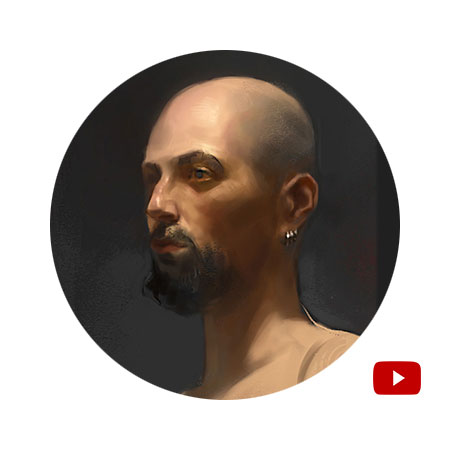
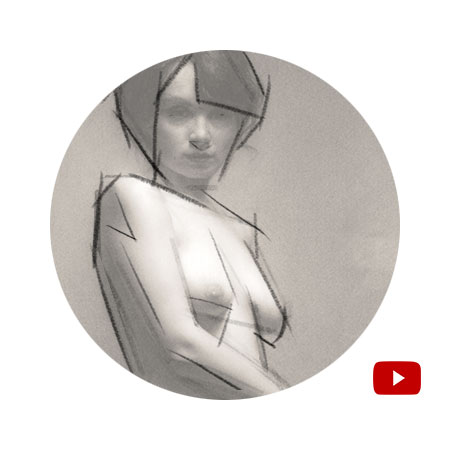
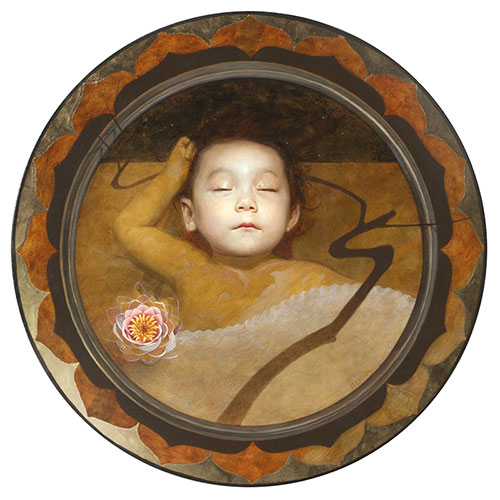
I’m trying to get this effect to work as part of a Computer Graphics project..
The angle they actually care about when calculating the amount of reflected light (and possibly refracted light, for transparent objects) is between the vector (or ray , if you prefer) created from the viewer to the spot you’re looking at on the object, and the surface normal of the object.
In other words, if you look directly down at the table, the angle is close to zero, and as you get closer to eye level with the table, the angle increases. This makes it easier to explain that “as the angle increases, the amount of reflection increases.”
Thank you Kevin!
I wanted to use as few technical terms as possible in order to keep the article short and easy to understand.
The surface normal is a very useful concept and I like your way of using it to describe the principle behind the Fresnel Effect.
I thought the angle of incidence is taken from the normal to the surface, why is yours taken from parallel to the surface?
Hi Vaughn! Yes, usually the surface normal is used to explain the Fresnel effect. My goal with this article was to make the concept of the Fresnel effect as simple to grasp as possible.
Adding the concept of surface normals would have increased complexity and cognitive load unnecessarily. I included a link to the Wikipedia entry for those readers that want to get the full technical explanation. 🙂
Thanks for putting this simple but clear explanation up, appreciate it a lot 🙂
Cheers Zahi!
Very useful explanation! Thanks for posting this.
Thanks for those tips. Is fresnel effect just another term for highlights?
Hey John! The two are related. Highlights are “specular reflections” and the fresnel effect describes how the intensity of specular reflection changes depending on your angle of view.
This video might clarify it: https://www.dorian-iten.com/see-more/
I had a hard time understanding this concept till I found this explanation, very simple and easy to grasp, thanks for keeping things simple.
Excellent explanation, making simple the (apparently) complex. Indeed, your description demonstrates that “complexity is n the eye of the beholder.’
Thank you, Jeff!
The diffuse light ur combining the fresnel effect with is actually the fresnel effect as well but approximated!!! 🙂